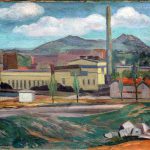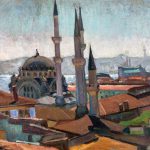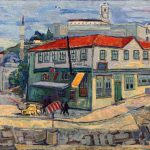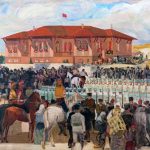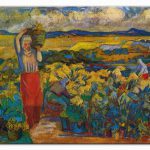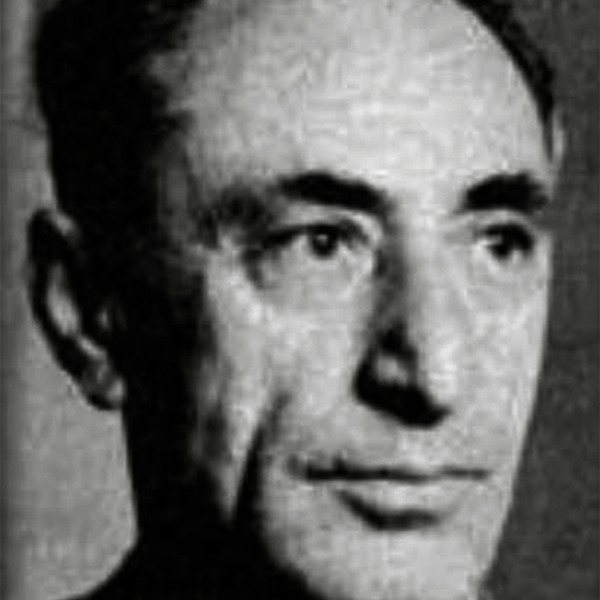
Who is Refik Fazıl Epikman?
After Davutpaşa High School, he entered Sanayi-i Nefise Mektebi in 1918. In 1924, he passed the European exam opened by the Ministry of National Education and went to Paris to continue his education. He worked in the workshop of Paul-Albert Laurents at the Julian Academy in Paris. When he completed his education and returned home in 1928, he was appointed as a teacher at Istanbul Fine Arts Academy (Mimar Sinan Fine Arts University). He was among the founding members of the Independent Painters and Sculptors Union, which was established on April 15, 1929.
Apart from Refik Fazıl Epikman, the Union consists of founding members such as Cevat Dereli, Şeref Akdik, Mahmut Cüda, Nurullah Berk, Hale Asaf, Ali Avni Çelebi, Zeki Kocamemi, painter and sculptor Muhittin Sebati and Ratip Aşir Acudoğlu. The Independent Painters and Sculptors Union was established as an artist union, which is a clear evidence of the institutionalization of the Republic of Turkey in the field of painting. The “Independent” movement in the field of painting in the contemporary Republic of Turkey brought the rapidly emerging changes in the field of art in Europe to Turkey, in other words, the “Independent” movement is the emergence of the concept of “group” by coming together within the framework of a common understanding of artists working in the Republic of Turkey. It is important in terms of causing the.
The artist, who left his duty at the academy in 1931 due to military service, was not accepted back into the academy when he returned from military service in 1933, due to the obstacles of the members of the Ottoman Painters Society, which dominated the academy during his time in the military. Thereupon, he started working as an art teacher at Ankara Atatürk High School, and in 1939, he was appointed as a workshop teacher in the Painting Department of Ankara Gazi Teachers' School and Education Institute.
Refik Fazıl Epikman, who remained in this position until 1966, was appointed as the head of the Fine Arts branch of the Community Centers after his retirement. Apart from his painting practices, he carried out important activities in the name of art with the articles he wrote in various publications. With his articles and books on art, he provided important services during a period when art publishing in Turkey was in its infancy. He died on May 17, 1974, one day after he was awarded the third prize at the 6th State Painting and Sculpture Exhibition held in 1944 and the honorary prize at the 35th State Painting and Sculpture Exhibition in 1974.
Exhibiting his works in group exhibitions; However, the artist, who did not open a personal exhibition, painted large-scale paintings about the proclamation of the Republic in the rooms opening to the meeting hall of the first Turkish Grand National Assembly building.
artistic perspective
It is possible to categorize Epicman's works in two groups in terms of pictorial language: expressionist, constructive, cubist and abstract tendencies. In both groups, diversity prevails in the choice of topics.
Before going abroad, Epikman studied with Çallı at the Academy. During this time, he grew up under the influence of the impressionist movement. However, when he returned home after his education in France, he completely moved away from impressionism and started painting from a constructive basis, and in the process, he incorporated the reflections of the cubist approach into his works. The color and light he used in the paintings of this period have completely different characteristics from the impressionist approach to painting. His most important work reflecting these features is the painting "Bar", painted in 1928.
Abstract tendencies that started in the 1950s began to show their influence in Refik (Fazıl) Epikman's paintings after the 1960s. His work "Static Order", made in 1966, is an important example where abstract understanding dominates. In his paintings under the name of "Abstract Composition" during this period, he reveals visual and emotional associations with geometric structures and stain values distributed on the canvas surface.
In his work titled "Vision III", which he painted at a later date than his work titled "Static Order", the disproportion between the male figure dominating the composition and the other elements in the composition appears as a reflection of the new trend. In addition, unlike his other paintings made with an abstract approach, Although it adheres to the form, it is observed that a cubist attitude prevails.
The artist also wrote articles about exhibition criticism, art events and art movements in the publications of the period such as Ar, Ülkü and Güzel Sanatlar Magazine. "Classical Painters" between the centuries, 17th, 18th books written in 1946. and 19th Century World Art are the products of art history research.
